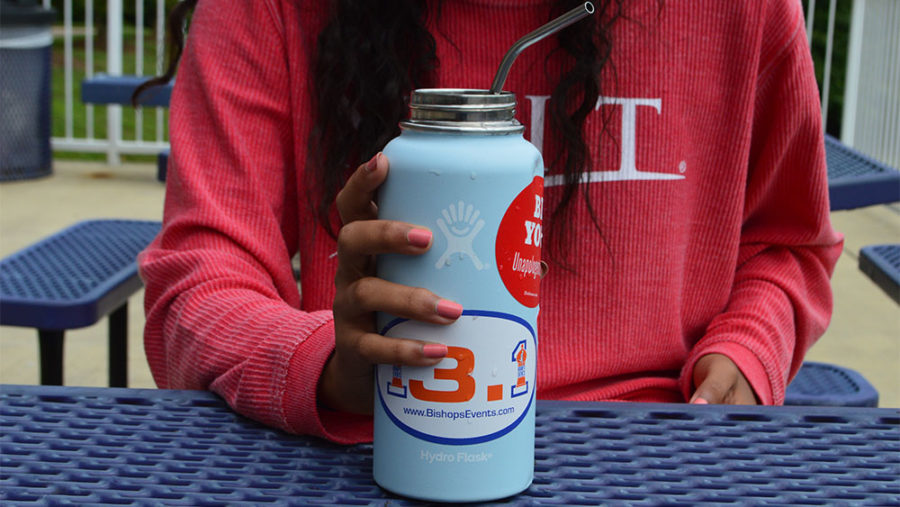A Strawless Summer
With the prospect of environmental disaster becoming more and more clear, companies are pitching in to try to do their part by ditching plastic straws.
As the effects of climate change become more and more devastating, companies are starting to take small steps in the right direction of slowing the fatal warming of the earth: by eliminating plastic straws. This summer, eight major companies ditched plastic straws, including Starbucks, Disney, and Hyatt. Each chain replaced straws with different mediums, ranging from sippy-cup lids and compostable straws. Metal straws have also become popular as people ditch plastic for reusable options. Junior Lilliana Quinones uses her metal straw to symbolize her environmental cautiousness.
“For me, using no straw or using my metal straw was more of a symbol of someone who recycles. I am using this metal straw because I care, and I am someone who is super conscious about my recycling,” said Quinones.
Plastic straws may be small, but they are a part of a huge problem. Plastic items are created by utilizing dwindling resources such as water and fossil fuels, and greatly pollute the environment in the process, according to the Washington Post. Since plastic materials are often designed to be single-use, humans have created a buildup of 9.1 billion pounds of plastic since the material was invented in 1907.
Most plastic does not decompose when it is thrown out, which leads to buildup in landfills and oceans for hundreds of years. The best way to prevent more buildup is to recycle plastic products, or to simply avoid using single-use plastics at all. Senior Madison Calvo has turned to reusable materials to reduce plastic use.
“Some things I do to reduce my personal plastic output are using canvas bags whenever I can, reducing the amount of plastic waste I produce by using bamboo utensils and avoiding Ziploc, and, as ‘basic’ as this sounds, I do own a hydro flask and a metal straw that I carry around on my keys. I know that one person doing these things won’t solve the problem that our world is facing right now, but I do what I can,” said Calvo.
The rollout of the new Starbucks lids were a point of controversy when the lids seemed to have one design flaw: they used more plastic than straws previously did. Although this is true, these new lids are different from straws, as they can be recycled, where as plastic straws cannot.
According to Jonathan Kuhl from the D.C department of public works, plastic straws can’t be recycled because their small size leads them to fall through the machinery used when plastics are sorted, making them end up in landfills and oceans instead. Plastics in the ocean float around in small pieces called microplastics that poison the environment and hurt animals.
Although plastic straws negatively affect sea life, it makes up only .025 percent of plastics found in the ocean, according to Phys and the UN.
So, is reducing plastic straws really effective? The simple answer is kind of. Although plastic straws don’t make up a majority of the plastic problem, it is a step in the right direction for environmental awareness. By eliminating plastic straw use, major companies like Starbucks and Disney are bringing the attention of many to the issue. Municipalities are getting in on the ban as well, with Seattle becoming the first major U.S city to ban plastic straws in July 2018.
For Quinones, the switch is symbolic of hope for a greener future.
“I think it’s definitely effective. People are definitely going to grab straws, but I do think that people notice the difference. I see it as a symbol, [companies] are showing that their brand is more environmentally cautious,” said Quinones.


